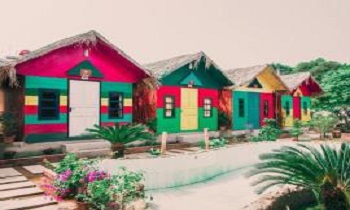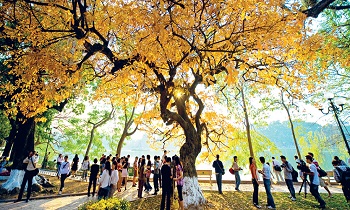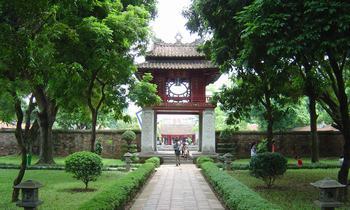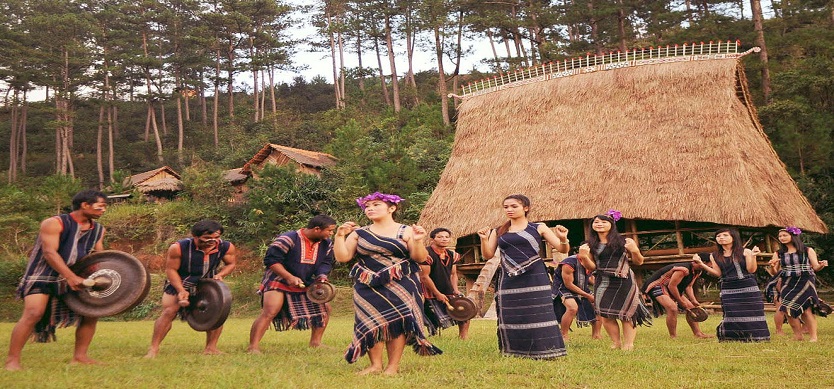
Discover the Gong culture in Central Highlands
Central Highlands gongs culture which covers 5 provinces of Lam Dong, Dak Nong, Dak Lak, Gia Lai, and Kon Tum has been recognized as an orally-transmitted masterpiece of humanity by UNESCO. Gongs play a prominent role in the spiritual life of ethnic groups in Central Highlands. The gong performances are always tightly tied to cultural rituals and religious ceremonies of the ethnic tribes in Central Highlands. Do not forget to take Vietnam tours to get more information about the best places to visit in Vietnam.
What are gongs?
Gongs are a traditional musical instrument of Vietnamese ethnic tribes in Central highland. Gongs can be made of several materials such as gold, silver, bronze or a brass alloy. There are two types of gongs, one with nipple called "cong" and the other without nipple called "chieng". Gongs have many different sizes with the diameter varying from 20cm to 60cm, for larger ones, this is even from 90cm to 120cm. The gongs may be played individually or collectively. A set of gongs includes 2 to 13 units, or even from 18 to 20 units in some particular occasions or places.

Gongs
The gongs of Central Highland are unique and diverse. The natural sound-scale is also adopted in gong orchestras. Depending on different ethnic tribes, a gongs orchestra can comprise 3, 5 or 6 main sounds. However, like a usual polyphonic musical instrument, gongs have some additional sounds apart from their primary ones. Actually, a six-gong orchestra can produce more 12 different sounds. That is the reason why gong sounds are resonant.
According to some cultural researchers, gongs are the “descendants” of dan da ( a stone musical instrument). Prior to the bronze culture, the stone musical instruments were popular such as stone gongs. In the beginning, the gong was played to celebrate new crops and initiate the agricultural work. Gongs also reflect the religious belief and a mean of communication with nature. All festivals round year from the ceremony of welcoming a new harvest to ceremonies of closing a store, or killing a buffalo must have gong performance which is seen as a connection between in one community.
Gongs culture
For the majority of citizen in the Central Highlands, the gongs are supposed to be the musical instruments of sacred power. It is strongly believed that there is a god living in each gong, who becomes more powerful when the gong is older. The gongs are a valuable treasure as well as a symbol of power and property. In the festivals, circles of people dance cheerfully around a sacred flame near jars of tube wine (ruou can) in joyful gong sounds echoing jungle and mountains, which creates a romantic and fanciful atmosphere. Therefore, the gongs occur frequently in epics and literary works, which imbued with the mighty and unique Central Highlands culture.
The most outstanding value of Central Highland gongs culture is supposed to be human creativity. The masters of gongs culture are the ethnic people in the Central Highlands. Although they can't cast gongs themselves, they improve the value of a musical instrument with their sensitive ears as well as the musical soul. In the hands of skillful folk artists, each gong plays a significant role of a musical note in a traditional orchestra to bring different attractive performances of gong music.
In most ethnic tribes, particularly Ede, Gia Rai, Kpah, Xo Dang, Ba Na, Brau, etc, gongs are a musical instrument for only males. However, in others such as Mnong or Ma groups, gongs can be played by both males and females while for few ethnic communities like E De Bih, only women play gongs.
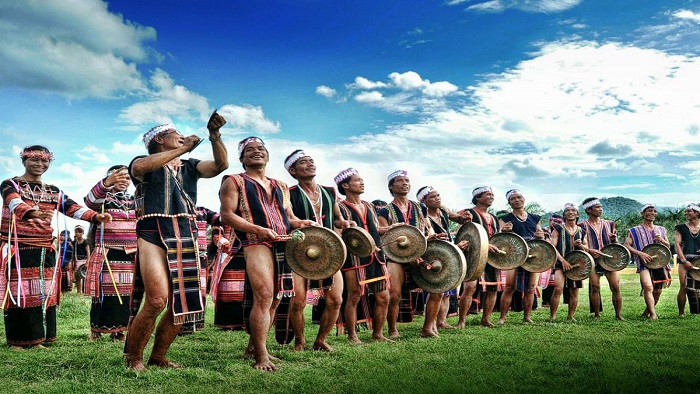
Gongs orchestra
On 2005, the Space of Gong Culture in the Central Highlands was inscribed by UNESCO as an intangible cultural heritage of humanity. The gongs culture of the Central Highland is a cultural heritage holding both temporal and spatial hallmarks.
Through its diverse categories, the method of amplifying, the scale of sound and gamut, melodies and performance, people are given an insight in a complicated art form which developed from simple to complex. It holds different historical layers of the establishment and development of music since the primitive period. All artistic values bear relationships of similarities and dissimilarities, creating their regional identities. With its uniqueness and diversity, it’s possible to assume that gongs keep a special position in Vietnamese traditional music.
The sounds of gongs represent skillfulness of players in applying gongs beating and sound producing techniques. From gongs correction to the performance of gong orchestra, professional methods of playing and performing, music players who have not experienced any training courses still deliver impressive performances.
In the Central Highlands people, gongs are a priceless property. The artistic values of gong music have been affirmed widely for a long time. It is also supposed to be the convergence of the sacred souls of jungle and mountains through generations. The gongs not only owns material significance and invaluable artistic values but also are a “voice” of Central Highland people and the deities under the conception of all things have souls.
The fame of gongs culture in Central Highlands has driven across national borders to become a property of humanity. Specific values of space of the Central Highlands gongs which is a part of Vietnam's cultural quintessence has been recognized by the international communities. Why don’t you stand up and take Asia tours right now? Asia is waiting for you. Share the post if you find it helpful.


